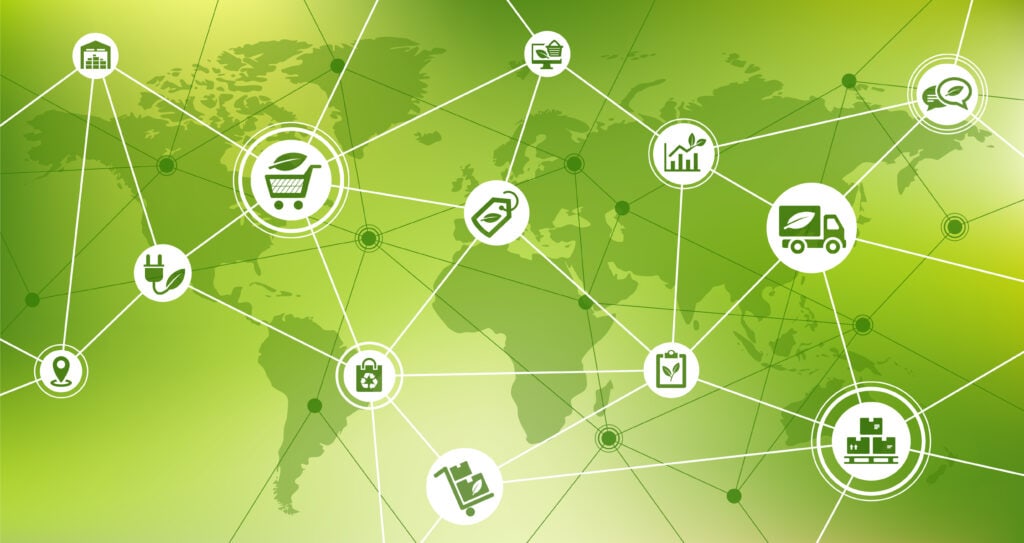5 Ways to Strengthen and Future-Proof Your Supply Chain

In recent years, environmental, social, and corporate governance (ESG) practices have become a critical aspect of any company’s reputation and success. Consumers don’t care just about what they are purchasing; they also care about how the product or service gets to them. For instance, an Edelman study shows 64% of consumers worldwide will buy or boycott a brand solely because of its position on a social or political issue.
The responsibility to act in accordance with ESG practices doesn’t end with your company’s own procedures and processes. It is making its way upstream to include all activities in the supply chain leading up to final product delivery.
That’s right. Company leaders now need to monitor and regulate the operations of any business involved in their supply chain. It is immaterial to many external stakeholders if suppliers’ unethical practices are not your company’s fault. Your company also risks damage to its brand and reputation, regulatory penalties, and civil and criminal liability.
To protect against these risks, and strengthen and future-proof your supply chain, take these five measures.
1. Assess, manage, and monitor ESG supply chain risks. Every supply chain is different, depending on factors such as the industry, company size, global scale, and company-specific decisions. Therefore, each supply chain presents different risks related to ESG compliance.
Company leaders must evaluate their suppliers and the potential impacts their supplies, products, or services could have on the environment and society. While general materiality and strategic management indicators are available by industry through agencies such as The Value Reporting Foundation and GRI, most companies must build upon existing best practices to develop a customized system for monitoring and managing these risks.
CRH, a company offering sustainable building materials and solutions, has done just this. It uses a matrix approach to develop heat maps that classify its suppliers based on 12 assessment criteria, including health and safety, human labor rights, environment, climate change, and governance. It then assesses these risks in accordance with government regulations, generates risk profiles, and creates recommendations and solutions based on the risk profile.
2. Set quantifiable supply chain sustainability goals. It’s difficult to track progress without measuring it. One of the first steps leaders need to take is to evaluate the current state of their company’s ESG compliance and the impact of its supply chains. Once leaders establish this critical baseline, they should set measurable targets and deadlines for meeting those goals.
HeidelbergCement is a prime example of setting quantifiable goals to decarbonize its supply chain. The company’s overarching goal is to offer carbon-neutral concrete across its product portfolio by 2050. HeidelbergCement has set a specific intermediate 2025 target to reduce its net CO2 emissions per ton of cement by 30% when compared with the company’s levels in 1990.
3. Improve supply chain traceability and transparency. The culprit of many ESG issues, especially in complex supply chains, may be ignorance of what is taking place. Company leaders should strive to improve the traceability and transparency of their supply chains.
This may involve creating tighter relationships with suppliers, being more heavily involved in oversight and management, and making data regularly available to stakeholders and the public.
Additionally, utilizing technology to track and manage supply chain data enables quicker access to up-to-date information and protects against “greenwashing” and “wokewashing” claims.
4. Impose ESG supply chain requirements through formal contracts. To guarantee control over supplier operations, companies may need to implement formal contracts with their suppliers. The agreements should clearly outline the ESG standards to be kept and the repercussions for failing to meet the requirements.
Despite having contracts, some suppliers might not clearly understand how to approach ESG integration, so be sure to resolve any questions or obstacles they might have. Concurrently, companies can include reward incentives in the procurement process that prioritizes suppliers with higher ESG metrics/commitments.
5. Create incentives to improve ESG supply chain performance. Internally, company leaders can motivate the workforce by offering incentives for achieving both long- and short-term ESG objectives. Identify rewards that employees find valuable, and communicate openly about the goals and progress toward achieving them.
Not only does this show internal contributors and external stakeholders how important ESG responsibility is to the company, but it also enables the company to achieve its targets more quickly and effectively.
The world of supply chain management is ever-evolving, and there is increasing emphasis on sustainable and compliant ESG practices. Company leaders should do all they can to strengthen and improve their supply chains by assessing their ESG risks, engaging with suppliers, and developing systems to monitor and manage their supply chains.
These best practices provide significant ways to implement ESG, whether you are just starting out or optimizing a long-running plan. While you can enact these ESG principles to improve your own operations, remember to use ESG to build relationships with suppliers and partners rather than just create restrictions so you can drive innovation for a better world.
Supply chain leaders may be surprised to find that when they partner with their suppliers to do better, they achieve more across a variety of metrics.

